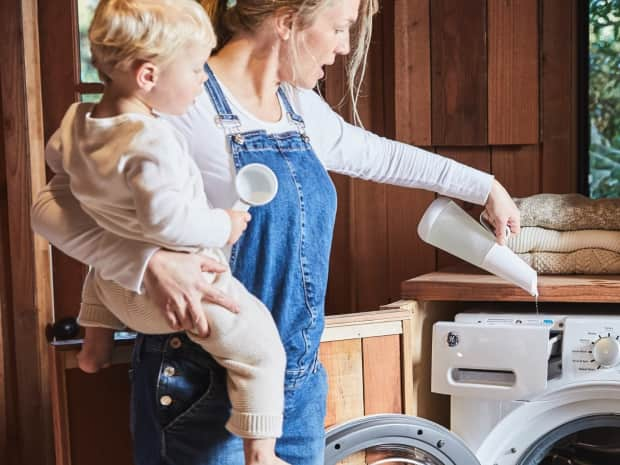
An expert's reasons to wash your clothes in cold water.
See how making the switch to cold water can help save you money (and your clothes) while reducing your carbon footprint.
Read More

Last Updated: June 25, 2021
What’s the difference between non-chlorine and chlorine bleach? Does one clean better than the other? Or make clothes whiter? We posed these questions and more to our Senior Director of Science Formulation, Clement “Clem” Choy, Ph.D., to learn all about the benefits of using non-chlorine bleach.
You’ve likely used some version of bleach in your laundry before, and you’ve likely seen commercials or grocery store aisles stocked with bottles and bottles of the stuff. But is there a safer alternative and does it work just as well? Let’s find out what non-chlorine bleach (or oxygenated bleach) is and how it works from Clem himself.
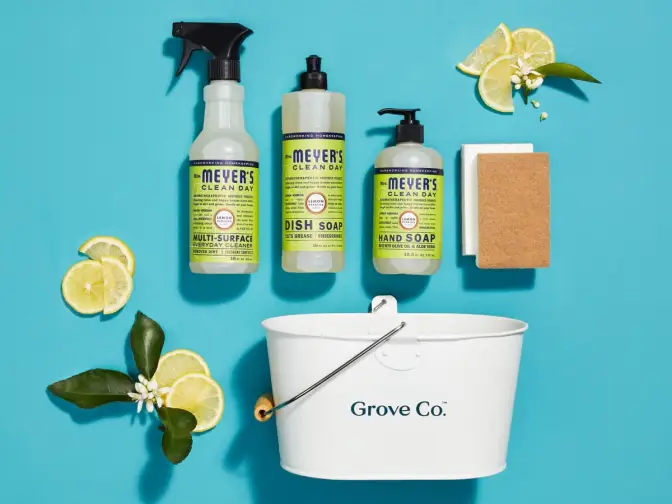
Wondering who Grove is, what types of products we offer, and how to get a free gift set when you sign up? Learn more about flexible monthly shipments, customizing your shipment, and joining millions of happy households — no monthly fees or commitments required.
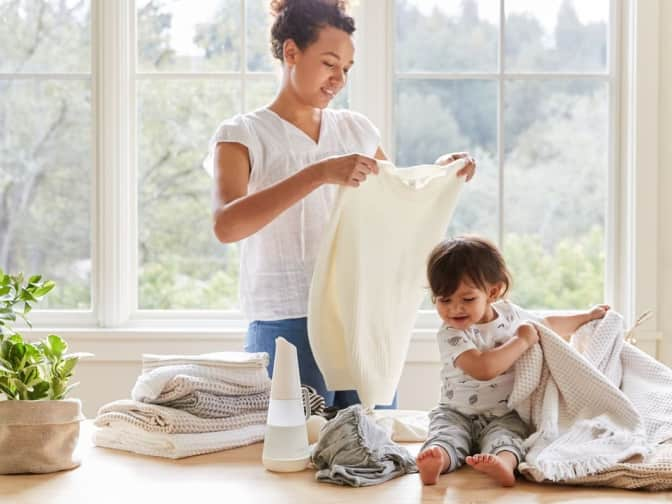
Clement Choy, Ph.D.: So the definition of non-chlorine bleach (also called oxygen bleach) is, you can argue, anything that doesn't contain chlorine and instead uses sodium percarbonate. The most common non-chlorine version in liquid form is hydrogen peroxide.
Non-chlorine bleach is mostly hydrogen peroxide (that’s been formulated, of course), typically around three percent.
CC: It is color-safe which is a huge key benefit. And the other main takeaway is that it is safer for your health and doesn’t produce chlorine gas or other harmful offsets. Oxygen bleach has safer molecules than regular bleach, and it won’t form more cancerous materials like chloroform either.
Chlorine bleach is more reactive, and therefore it can damage more things. But non-chlorine bleach, like hydrogen peroxide, is still a chemical that needs to be used correctly. So it's relative.
CC: Yes, I think you can put it on all colors with the exception of using it with particularly delicate items. You still have to do your testing on an inconspicuous spot to be sure, but, in general, it’s safe on colored fabrics.

CC: In most consumers’ minds if you talk about “bleach,” it's a chlorine version. And it's the bleach you use in your laundry, your swimming pool, etc.
Another way of saying it is sodium hypochlorite, which means it’s “an ion composed of chlorine and oxygen” that oxidizes and breaks apart chemical bonds (i.e., stains). So when you say “chlorine bleach,” it's really implying that it's made from chlorine, even though there's actually very little chlorine in it.
CC: It is more hazardous than non-chlorine bleach simply because it is more corrosive. So you have to be more careful about how you use it. It can cause color damage if you accidentally spill it on something, and it shouldn’t be mixed with other products. But generally speaking, yes, it is safe to use if you follow directions.

CC: Chlorine has more of an environmental impact simply because it is so reactive. And when it reacts with organic matter it can create chemical compounds that are potential carcinogens. So that's why chlorine, as much as it's a very old molecule and a very effective molecule, gets a bit of a bad stigma.
But it’s all about how much you use and what it’s mixed with. Chlorine on its own is a very effective molecule and actually saves a lot of lives just because it’s such a powerful disinfectant. But as with anything that’s used incorrectly, or not in the proper amount, it does have some environmental impact. It's all a matter of concentration.
Typically when you use it in your laundry, the recommended dosage is around 200 parts per million (ppm), which is around 0.02% by weight. Now, by contrast, if you add it to a water source (which is very common to make water safe to use) it’s typically 5 ppm; so a very low level.
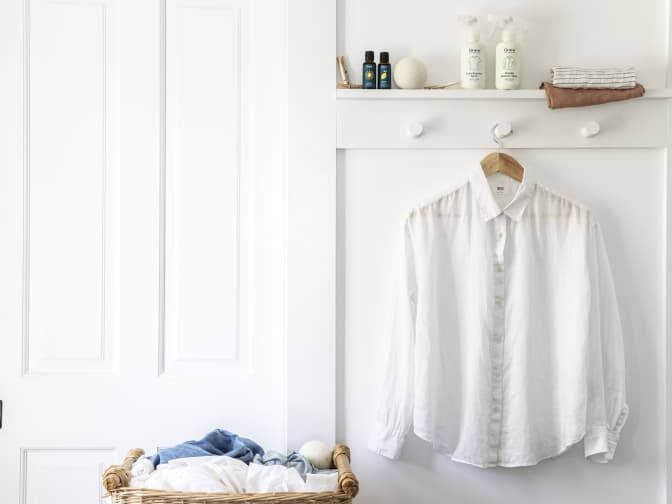
CC: They have a lot of similar uses, primarily when it comes to laundry. While there are some disinfecting properties to both, non-chlorine and chlorine bleach do different things because they are made up of different molecules.
The main difference is that they don’t have the same efficacy, and non-chlorine bleach doesn't have the same whitening benefit. It doesn't remove stains the way chlorine will. So if you have whites, and you really want it to be more clean and bright white, you may need to use chlorine bleach in your washing machine with especially dirty white clothes ... or try these more natural tips for whitening your clothes.
CC: There’s not that big of a difference in price. I think chlorine bleach is a little less expensive. But the difference is not like day and night and is pretty nominal.
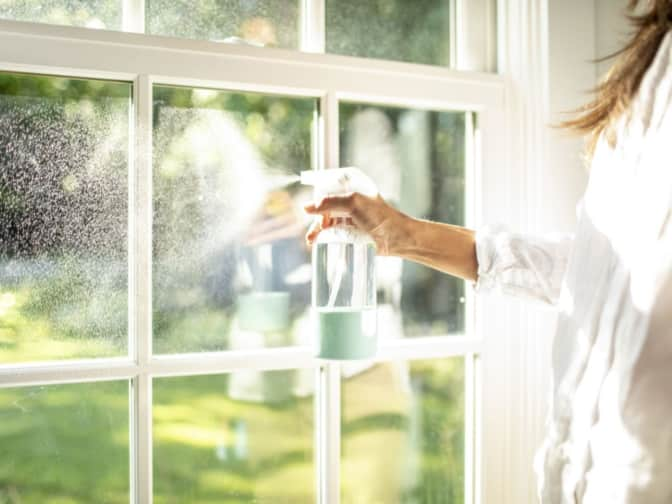
CC: We do not recommend using non-chlorine bleach as a disinfectant, and it should not be used instead of a properly formulated cleaning product. Even though both non-chlorine and chlorine bleaches are used for cleaning your clothing, they do not have the same efficacy for cleaning or disinfecting surfaces around your home. They were not made or tested to do that.
So while non-chlorine bleach is made out of hydrogen peroxide — a generally, well-performing disinfectant — you shouldn’t just squirt it on a countertop. There are plenty of cleaning products that have hydrogen peroxide in them, and they have been specially formulated with other surfactants for that purpose. For more cleaning tips, take a look at Grove’s Clean Team articles that focus on disinfecting naturally.
Are you ready to take advantage of non-chlorine bleach’s color-safe and people-safe properties? Check out a few of the clean, green brands Grove carries to help you tackle your laundry one load at a time.

See how making the switch to cold water can help save you money (and your clothes) while reducing your carbon footprint.
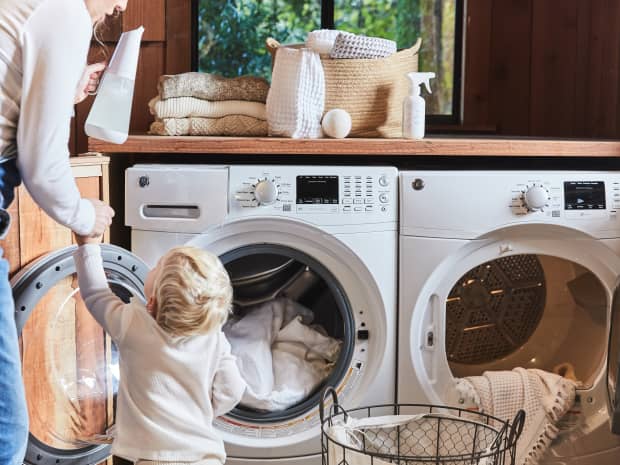
We've pulled the top 9 laundry detergents as determined by Grove members. Select from any on the list and get them delivered to your door!
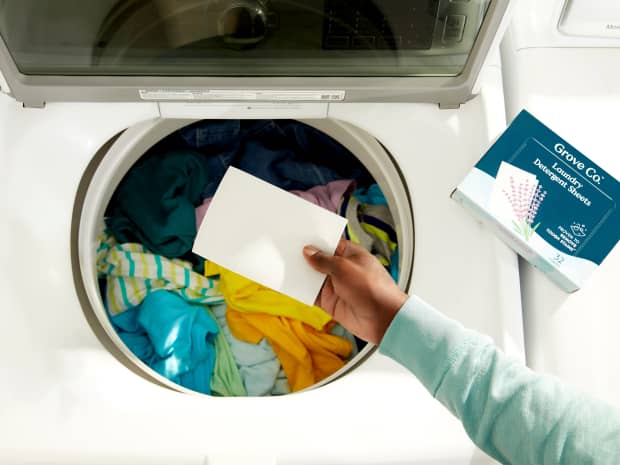
Extra plastic from soap bottles bites Mama Earth in the butt. Learn about zero-waste laundry soap sheets and how they actually work.

With our step-by-step guide, we’ll show you how to wash white clothes to make them shine bright (and stay that way).